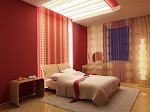Garden Redecorating – Tips and Tricks

1.Climate is a very important consideration when planing to invest in an outdoor wooden furniture. Besides, the kind of wood that will best suit your need as well as climate is also an important tip to keep in mind.
2.Make sure that you keep your garden furniture stored and covered when not in use. You can keep them in the garage or under any overhanging wall as this will prevent them from climate disaster.
3.Reading the manufacturers instructions is also important. Don't become the ignorant masters of these furniture as they require a lot of maintenance. It is important that you are aware with all the nuances before you set up your garden furniture.
4.Sun and rain might be the ideal situation for spending some time in the garden, but they are surely not the best of agents for your furniture. To avoid losing the sheen of the furniture place them under an overhanging or garden shade can do the trick.
5.Before the commencement of a new season, one can use various kinds of protectants in order to save the furniture from climatic changes. Depending upon the type of furniture, you can use paints, tar, oil, wax or even preservatives. Wiping is a very common and convenient method that can be used by the owners. All you need is just a dry cloth to keep the furniture free of moisture.
6.To keep the legs of the furniture free of unwanted mud and dirt, place four cups beneath the chairs. This is a very helpful tip, especially when there is a lot of grass in the garden. Out some wood preservatives in the cups and allow them to absorb completely for good effect.
7.To keep your furniture clean, ensure that you wash them with soap and water at least once in a month. Just take a moist or soapy cloth and wipe them. But do not allow the water to stand. Make sure that it is completely dry and use a wood cleaner if required.
These were some of the basic tips that can hep you curb the multitudinous problems that can trouble you in case you are not sensitive towards your garden furniture.















![Reblog this post [with Zemanta]](http://img.zemanta.com/reblog_e.png?x-id=d70c10b8-033b-426e-aa59-8cef0c2013b6)



![Reblog this post [with Zemanta]](http://img.zemanta.com/reblog_e.png?x-id=0f49bd90-da6e-4951-be26-a05a1c60b490)


![Reblog this post [with Zemanta]](http://img.zemanta.com/reblog_e.png?x-id=057a9d37-bbf9-4861-90ee-762a1a334e63)




